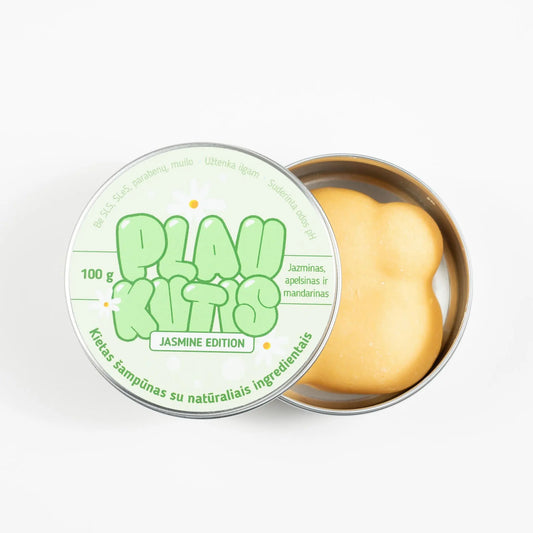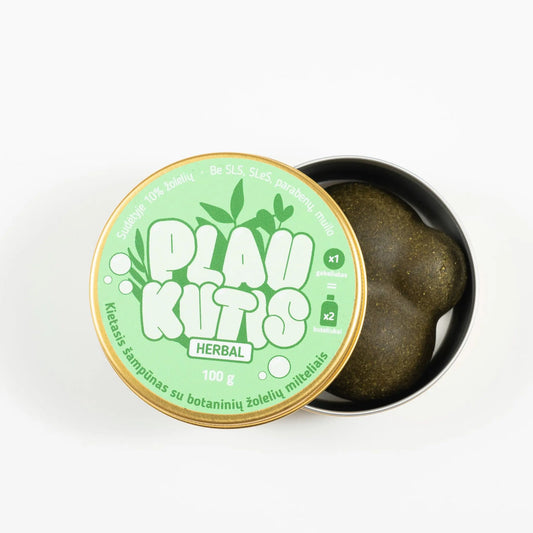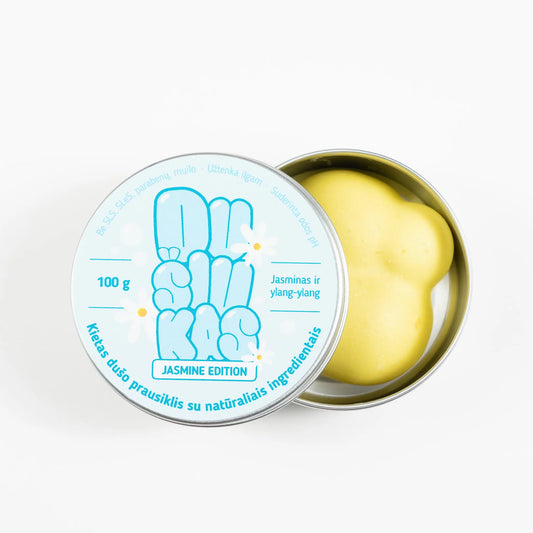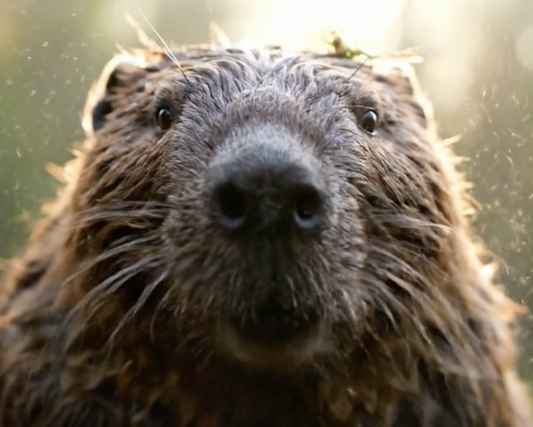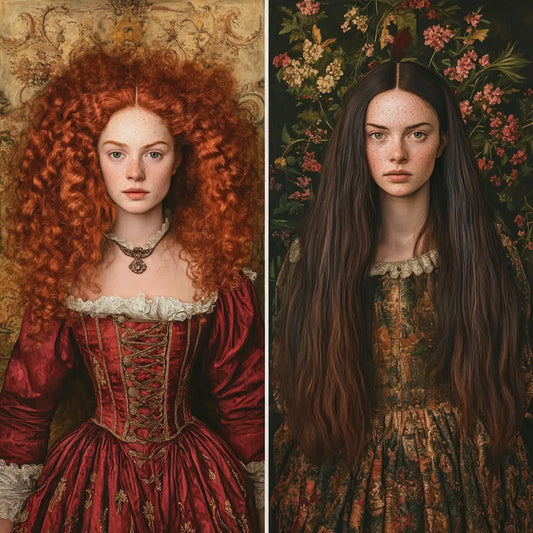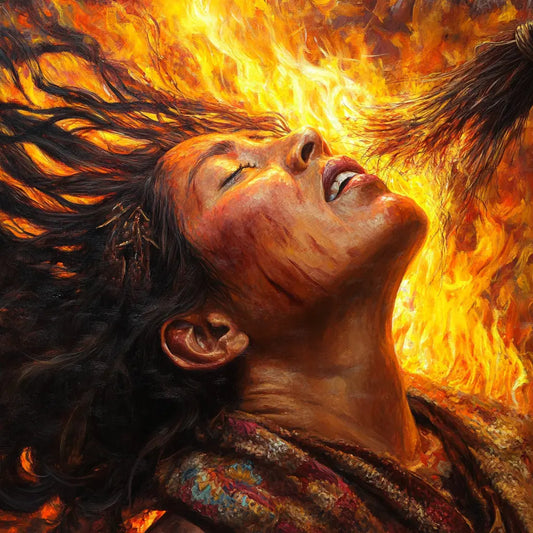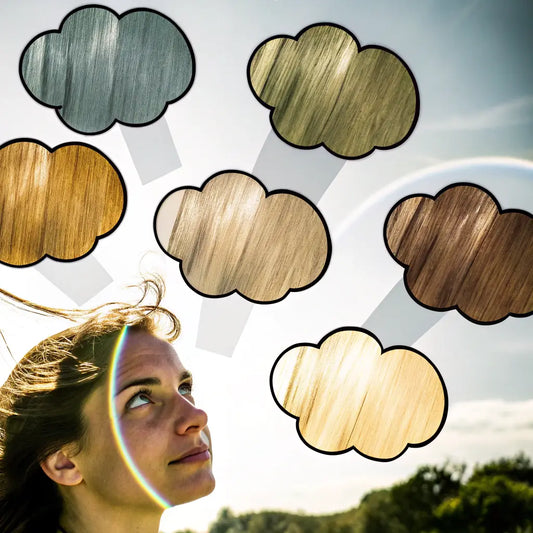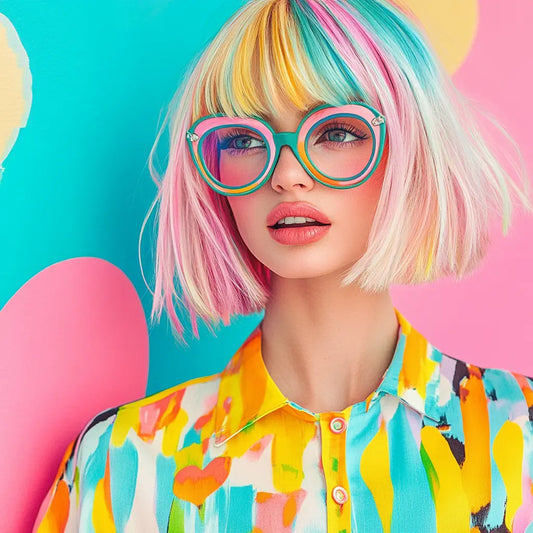1. Balancing beauty and hair health
Have you ever felt like you had to choose between your dream hair color and the fear of damaging it? You're not alone. About 65% of women dye their hair at least once a year, but many fear that dyeing their hair can lead to dryness, split ends, or even hair loss.
Dye can be a miracle. It can hide gray hair, add shine, or let you show off your wild side. But the truth is, hair dye also changes the very foundation of your hair structure. Interestingly, hair can lose up to 25% of its natural moisture during a single dye session , according to research in the International Journal of Cosmetic Science .
Hair dye has a deep tradition in some cultures. In ancient Egypt, women used henna and indigo to dye their hair. In 16th century Japan, samurai dyed their hair dark blue-black as a sign of loyalty. Today, hair dyeing is a global trend – the hair dye market is expected to reach $23 billion by 2024!

And what are the real effects of hair dye on hair health? Here's what we'll look at:
-
How dye changes the protein structure of hair.
-
Why moisture balance becomes even more important after coloring.
-
The most common problems – dryness, cracking, breakage – and how to avoid them.
-
What myths about hair coloring still persist (e.g., "dye stops growth!").
-
Tips from professionals and dermatologists on how to maintain strong, healthy colored hair.
“Hair dye isn’t the bad guy you’re often led to believe,” says Dr. Emily James, a dermatologist and scalp health specialist . “But if you don’t take care of your hair after dyeing, even the most beautiful color can turn into dry, brittle straw.” This is backed up by research: dyed hair can lose up to 18% of its natural elasticity if you don’t take care of it properly.
But don't worry - in this article you will find:
-
Microscopic studies of how the dye penetrates the hair.
-
Real stories from women about the challenges of dyeing their hair.
-
Color longevity calendar so you know when to refresh or maintain your color.
-
Fun myths and cultural facts you may not have heard before!
Whether you're a color professional or just starting to experiment, this guide will help you have healthy, colorful hair.
Ready? Let's get started!

2. How dye changes the protein structure of hair
2.1. The science of hair dye penetration
Hair may look simple, but it's made up of a complex protein structure. Each hair has three layers: the cuticle (outer layer), the cortex (middle layer), and the medulla (inner core, which is not always present). It's in the cortex that all the color action happens.
When hair dye is applied to the hair, the cuticle is first opened. This protective layer, made up of overlapping “scales” like fish scales, normally protects the hair from moisture loss and damage. Dyes use chemicals, such as ammonia or monoethanolamine (MEA) , to gently lift these scales. This raises the hair’s pH from 4.5-5.5 to around 10 , allowing the dye to penetrate deep into the hair shaft.
Once the cuticle is opened, tiny color molecules penetrate the cortex, where they combine with the natural pigment, melanin . The result? A color change that can last for weeks or months.
Did you know?
-
The average human hair can stretch up to 30% of its length when wet, but this elasticity can be reduced by almost half after frequent coloring.
-
L'Oréal scientists examined dyed hair under electron microscopes and found that after dyeing, the cuticle scales become disordered and more porous – like a roof with missing tiles!
2.2. The role of melanin and cortical damage
The natural color of hair depends on melanin : eumelanin (brown/black) and pheomelanin (red/yellow). The darker the hair, the more melanin - therefore, stronger chemicals are required to dye it.
Lightening dark hair often requires stronger products (like peroxide) to strip away the natural pigment before applying the new shade. This double process damages the hair structure – which is why going from black to platinum blonde is so difficult: it literally breaks down the strength of the hair.
A 2022 study published in the Journal of Dermatology Science found that repeated coloring can reduce hair elasticity by as much as 20% – meaning hair becomes less resistant to breakage.
2.3. Bond breakage and structural weakening
Permanent hair dyes use peroxide to oxidize and lighten hair. This can damage the disulfide bonds that give hair its shape and strength. These bonds are very important - they are like a skeleton inside each hair.
-
Permanent dyes: penetrate the deepest and change the hair structure the most.
-
Demi-permanent dye: gentler, but still lifts the cuticle.
-
Semi-permanent dye: covers the hair more, but does not penetrate deeply - therefore causing the least damage.
An interesting "mini lab test":
When hair dyed with peroxide is viewed under a microscope, you can see color molecules stuck to the cortex—like tiny beads strung on a thread. These “beads” give the color its vibrancy, but they also create weak spots that can lead to hair breakage.
Cultural twist: hair dyeing traditions around the world
Around the world, hair coloring has always been more than just a beauty treatment – it’s a sign of identity and status. In India, women have been using henna for centuries – it not only colors the hair, but also strengthens it by bonding to the cuticle.
In Viking times, warriors would bleach their hair with lye (wood ash mixed with water) to look powerful and determined. Unfortunately, the harsh method often left the hair brittle – just like modern bleaching.
Today, in South Korea, women adore pastel shades, while in Brazil you'll often see bright, fiery shades. In all these cultures, hair color is a way of changing and expressing yourself.
Expert insight
“The effect of hair dye on strength depends on how often you dye it and how you care for it afterward,” says Dr. Sarah Gomez, a trichologist and hair science researcher . “It’s like exercise—if you keep pushing your hair to extremes (like bleaching it frequently), it’s going to break eventually.”
Main message
Coloring your hair is a fun way to express yourself, but it's also a real "chemical experiment." By understanding how dyes affect your hair structure, you can choose the best care and keep your hair strong and healthy - no matter what color you choose!

3. Moisture retention and porosity after painting
3.1. Porosity and its effect on colored hair
Porosity is the ability of hair to absorb and retain moisture. You can think of it like a sponge: some hair absorbs everything, while others barely let anything in.
When you dye your hair, your porosity changes. Dye lifts the cuticle layer so the color can penetrate. But that also means your hair loses moisture much faster. A 2021 study by the American Academy of Dermatology found that dyed hair can have up to 35% more porosity than natural hair.
Why is this important?
-
Highly porous hair absorbs moisture and dye quickly, but loses it just as quickly, leading to rapid color fading and dryness.
-
Low-porosity hair has difficulty absorbing moisture and dye, so the color can be uneven and the hair can be dull.
Cultural twist: Porosity differences around the world
Different hair types naturally have different porosity:
-
African-origin hair , due to its tight curls, often has higher porosity even before coloring.
-
Asian hair usually has low porosity - it is harder to saturate with moisture, but it is also harder for dye to absorb.
-
European hair is often of medium porosity.
In Japan, hairdressers use “porosity maps” to apply hair dyes and treatments, an idea that is gaining traction around the world as it helps maintain hair health!
3.2. Why dyed hair loses moisture faster
When dye lifts the cuticle, tiny gaps appear—like open windows. They allow moisture to evaporate more easily. Worse still, if you use hot styling tools after dyeing, it’s a double whammy for your hair. Studies show that dyed hair, which is frequently exposed to heat, can lose 20% more moisture , according to a 2023 study by Cosmetic Chemistry Insights .
What does this mean to you?
-
Hair may look shaggy and rough.
-
The color fades faster because there is no moisture "lock".
-
Hair becomes weaker, more prone to breakage and splitting.

3.3. How to identify and adapt to your porosity
Want to know what your hair porosity is? Here are a few simple tests:
✅ Flotation test:
Drop a clean strand of hair into a glass of water. If it sinks quickly, your hair is very porous. If it floats, it has low porosity.
✅ Finger test:
Run your fingers through the strand from the ends to the roots. If you feel roughness, the cuticle is raised - high porosity. If it is flat - low porosity.
✅ Professional assessment:
Some hairdressers have special microscopes (trichoscopes) that help you see what's happening to the hair cuticle.
Knowing your porosity can help you choose the right care:
✅ Very porous hair:
-
Use thick, moisturizing conditioners and masks.
-
Avoid washing too often, as this removes natural oils.
✅ Low porosity hair:
-
Choose light formulas to avoid weight gain.
-
Use cleansers occasionally to remove buildup and improve absorption.
Porosity map for different hair types:
| Hair type | Normal porosity | The effect of staining |
|---|---|---|
| Straight hair | Small-medium | More difficult to dye, requires additional cleaning to achieve a uniform color |
| Wavy hair | Average | Looks good, but fades quickly if porosity increases |
| Curly hair | Medium-large | Dries quickly, color fades faster |
| Spiral hair | Large | Needs more moisture and gentle care |
Expert insight
“Knowing your porosity is a lifesaver for color-treated hair,” says Lana Tran, a Paris-based hair colorist . “It helps you avoid unnecessary damage and choose the right products.”
Main message
After coloring, your hair's porosity becomes your secret weapon (or problem). By understanding your hair's characteristics, you can help it retain color, moisture, and prevent dryness.

4. Common problems: dryness, cracking, breakage
4.1. Dryness and dullness
Let's start with dryness - this is the most common problem after coloring. Even the best color job can leave your hair dry if you don't pay enough attention to it afterwards.
Why does this happen?
The raised cuticle during dyeing allows the color to penetrate, but it also leaves open “windows” through which moisture evaporates more quickly. If dye is used frequently, this becomes a constant cycle of moisture loss.
Did you know?
A 2022 study by the Hair Science Institute found that dyed hair can lose up to 15% more water than natural hair in dry climates. This can leave your hair looking especially “thirsty” after a summer beach holiday.
Signs of dry hair:
-
They are rough and tangled even after conditioning.
-
It has more electrification and frizz.
-
Lack of shine, especially in natural light.
4.2. Split ends and breakage
Let's talk about one of the biggest enemies of dyed hair - splitting. Dyeing weakens not only the cuticle, but also the cortex, so the ends start to "split" more quickly.
When you see split ends, it means the protective outer layer has worn away – like a rope with tangled ends. Left unattended, these splits can “climb” up the hair shaft.
A real woman's story:
“I dyed my hair blue for my 30th birthday, but within 3 months my ends were split all the way down the middle!” says Maria from London . “Now I know that regular trimming is essential, even if you’re growing your hair out.”
Even worse is breakage. Unlike natural hair loss (which is normal), breakage occurs within the hair itself. It indicates that the cortex (the inner “spine” of the hair) has weakened, so even gentle brushing can break it.
Interesting number:
Color-treated hair can have up to 25% less elasticity , according to a 2023 study in the European Journal of Hair Science . This explains why color-treated hair breaks much more easily.
4.3. Elasticity and snap-back test
Elasticity is the ability of hair to stretch and snap back into place. Healthy hair can stretch and bounce back without breaking. However, coloring, especially lightening, reduces this ability to “bounce.”
Fun test at home:
-
Take a wet strand of hair.
-
Gently stretch.
-
If she comes back, it's okay.
-
If it breaks or stretches too much, your hair needs help.
Pro tip: why a haircut is necessary
One of the best tips for color-treated hair is to get your ends trimmed regularly. Even if you have long hair, trimming helps prevent split ends.
Expert insight:
"Women are often afraid to cut their colored hair because they don't want to lose length," says Sophie M., a top colorist in New York City . "But even small cuts every 8 weeks can help your hair grow longer by stopping the spread of split ends."
Myth busting: fun facts
Let's debunk a few common myths:
✅ Myth: "A haircut stimulates hair growth."
❌ Truth: Hair grows from the roots, not the ends. But getting regular trims stops split ends and helps hair look healthier and last longer.
✅ Myth: "Colored hair always breaks."
❌ Truth: With proper care – moisturizing, using the right products – colored hair can be strong and beautiful.
✅ Myth: "Silicone serums 'repair' split ends."
❌ Truth: Serums can temporarily "seal" split ends, but only scissors really fix the problem.
True stories from women: confessions of breakups
-
Anna from Berlin: "I thought I didn't need conditioner after coloring - wrong! My ends are like straw."
-
Jessica from New York: "I tried to go from brunette to platinum at home and my hair broke in half! Now I know how important a protein regimen is."
-
Mai from Tokyo: "My hairdresser suggested sleeping on a silk pillowcase. It reduced the split ends and frizz - it really works!"
Main message
Dryness, split ends, and breakage are the number one enemies of color-treated hair. But that doesn't have to be the fate of your hair!
-
Don't forget about deep moisturizing masks.
-
Trim your ends – even the smallest cuts help.
-
Avoid rough shaping and choose gentle tools.
With these products, your dyed hair will be healthy, shiny, and ready for any occasion!

5. Scalp health and hair growth: myths and reality
5.1. Does hair dye affect hair growth?
One of the most common questions is, can hair dyeing slow down hair growth? Here's how it really is:
-
Hair grows from a follicle, which is located under the skin.
-
The dye only affects the part of the hair above the skin.
-
So coloring should not directly affect growth rate.
But here's the danger: If the dye irritates your scalp or causes an allergic reaction, it can cause inflammation . And inflammation can affect follicle health and even slow hair growth.
Interesting fact:
-
A healthy scalp can grow up to 1.25 cm of hair per month .
-
If the skin is irritated, growth may slow down or shedding may increase.
5.2. Scalp barrier damage
Your scalp has a natural protective layer called a “barrier” that helps keep it healthy. Chemical dyes (especially those with ammonia or peroxide) can damage this layer.
When this happens, you may notice:
-
Itching
-
Redness
-
Dandruff
-
Burning sensation
These signs indicate that the scalp microbiome (beneficial bacteria that protect the skin) has become unbalanced.
Cultural fact:
In India, many women use coconut oil to protect their scalp before dyeing their hair. This isn't just a tradition—a 2019 study in the Journal of Cosmetic Dermatology found that applying coconut oil before dyeing can reduce inflammation by as much as 30% .

5.3. What to look out for – signs of scalp damage
If you're not sure if your scalp is healthy, look for these signs:
✅ Constant itching
✅ Dry dandruff that doesn't go away
✅ Pain or burning after coloring
✅ Small pimples or rashes
If you see these signs, it's best to take a break from coloring and focus more on scalp care. Let your skin recover - postpone coloring until everything calms down.
Expert insight
“Many women forget about scalp care because they’re so focused on their hair,” says Dr. Olivia Tran, a dermatologist and trichologist . “But a healthy scalp is the foundation for strong, beautiful hair. Especially if you color your hair frequently.”
Main message
Hair dye does not directly block hair growth, but it can indirectly affect it if the scalp reacts poorly.
-
Monitor your scalp – if it is red or itchy, take a break.
-
Try soothing scalp masks or natural oils.
-
If the irritation persists, consult a dermatologist.
Pro tip: How to soothe your scalp
✅ Use a gentle, sulfate-free shampoo.
✅ Avoid very hot water - warm or cool is better for the skin.
✅ Protect your scalp from the sun - UV rays can increase irritation.
Mythbusting: Scalp Health Myths
✅ Myth: "Itchy scalp after dyeing is normal."
❌ Truth: A little tingling during coloring is normal, but persistent itching or pain after coloring is a sign that something is wrong.
✅ Myth: "Natural dyes like henna cannot cause allergies."
❌ Truth: Even natural dyes can cause irritation, especially if you have sensitive skin or allergies.
✅ Myth: "Allergies to paint are very rare."
❌ Truth: As many as 5% of people can have an allergy to hair dye – even if you have never used it before.
Main message
Your scalp is the foundation of your hair's health. Listen to its signals, take care of it, and your hair will be not only beautiful, but also strong!

6. The best after-care for dyed hair
6.1. The first 48 hours: color consolidation and damage reduction
The first two days after dyeing are extremely important . During this time, the color is still "fixing" in the hair structure. If you wash your hair too early, you may remove the dye before it has fully "fixed".
What to do – and what to avoid?
✅ Wait at least 48 hours before the first wash.
This allows the cuticle to close and the color to last longer.
❌ Avoid hot water.
Hot water opens the cuticle even more and accelerates the fading of the color. It is better to wash with warm or cool water.
✅ Choose sulfate-free shampoos.
Sulfates are harsh detergents that strip color. Look for “sulfate-free,” “suitable for color-treated hair,” or “low pH” on the label.
Interesting fact:
Studies show that shampoos with sulfates can fade color up to 40% faster than gentle alternatives.
6.2. Weekly maintenance routine
Colored hair always requires more attention. A weekly care plan will help you recover from the stress of coloring and keep your color longer.
Here is a simple weekly plan:
🧴 Moisturizing mask – 1–2 times a week
Look for masks with ingredients like:
-
This butter
-
Coconut oil
-
Hyaluronic acid
-
Aloe vera
They help lock in moisture and give hair smoothness and shine.
💪 Protein treatment – every 2–3 weeks
Hair is made up mostly of protein (keratin). Coloring damages these proteins, so it's worth restoring them. But don't overdo it - too much protein can make your hair stiff.
✅ Protein is needed if hair looks very stretchy or "soft" when wet.
Interesting number:
A 2023 lab study showed that hair that used protein masks was 12% stronger than hair that didn't use them.
6.3. Styling and heat tips
Heat styling puts added stress on colored hair. But that doesn't mean you have to give up all your tools—just use them wisely.
✅ Always use heat protectors.
Sprays or serums create a protective film between the hair and the heat.
✅ Do not let the temperature exceed 180°C.
Higher temperatures open the cuticle even more and fade the color.
✅ When possible, choose natural drying.
And if you still need a hair dryer, use a cold or damp curl diffuser.
✅ Never style wet hair.
Wet hair is the weakest - let it dry at least 70% before styling.

🟪 New angle: color longevity calendar
To make your color last longer but not damage your hair, follow this schedule:
| Time after painting | What to do |
|---|---|
| 1–2 days | Do not swim, avoid active activities |
| 1 week | Use gentle, color-safe products |
| Week 2 | Moisturizing mask + heat-free week |
| Week 3 | Refresh the color with a gloss or toner |
| Week 4 | Protein procedure |
| Week 5–6 | Trim the ends, check the roots |
Gloss or toner?
-
Gloss adds shine and vibrancy without causing much damage.
-
Toner helps remove yellowness or unwanted tones (especially for blondes).
Expert insight
"Aftercare after coloring is not the same for everyone," says Lina Kozlova, a hairstylist to Hollywood celebrities . "Most people mistakenly believe that you need to continue the same routine as before coloring. But colored hair is like new fabric that requires different care."
Additional tips:
-
Sleep on a silk pillowcase to reduce friction.
-
Use wide-toothed combs , not brushes.
-
Don't wash your hair too often - 2-3 times a week is enough for colored hair.
-
If you are often in the sun, use UV protection - UV rays fade the color.
Main message
The true beauty of dyed hair lies not only in the color, but also in the care after it. The first 48 hours are critical, but long-term care is everything. Take care of your hair - and it will delight you for a long time!

7. The best products for colored hair
7.1. Masks and conditioners
After dyeing, your hair is simply craving moisture and care. Masks and conditioners become real lifesavers!
✅ The best moisturizing masks:
-
Olaplex No. 3 Hair Perfector : strengthens hair bonds and adds shine.
-
Briogeo Don't Despair, Repair!: moisturizes and restores protein.
-
Kérastase Masque Chromatique : protects color and adds softness.
✅ Home tip:
Mix coconut oil and honey and use as a 20-minute mask. Science backs this up – coconut oil penetrates up to 90% of the hair shaft , while other oils only penetrate 30%!
✅ Leave-in conditioners:
Helps lock in moisture after washing. Look for products with shea butter, argan oil, and vitamin E.
7.2. Shampoos and cleansers that protect color
Regular shampoos can be too harsh on color-treated hair. Shampoos designed for color-treated hair help keep your color longer.
What to look for:
-
pH balanced (about 4.5-5.5)
-
Sulfate-free
-
With UV filters (protection from sunlight)
✅ Best choices:
-
Pureology Hydrate Shampoo : sulfate-free, gentle on color.
-
Redken Color Extend Magnetics : moisturizes and protects color.
-
L'Oréal EverPure : good price and no sulfates!
7.3. Serums and oils
Serums and oils help lock in moisture, reduce frizz, and add shine. The key is not to overdo it!
✅ Popular serums and oils:
-
Moroccanoil Treatment : light but very nourishing.
-
Verb Ghost Oil : invisible, does not weigh down hair.
-
Aveda Color Conserve Daily Color Protect : adds shine and helps maintain color.
Cultural fact:
In Morocco, women have been using argan oil for their hair for centuries – long before it became popular around the world!
Unexpected tip: homemade oil and mask blends
Want to save money? Here's a simple recipe:
Coconut oil and honey mask:
-
Warm 2 tablespoons of coconut oil with 1 tablespoon of honey.
-
Apply to damp hair, leave on for 20 minutes.
-
Rinse with cool water - your hair will be soft and shiny.
✅ Why it works:
-
Coconut oil restores hair structure.
-
Honey acts as a humectant – it draws moisture from the air into the hair.
-
Together, they create a long-lasting moisturizing "shield".
Expert insight
“Colored hair care products need to strike a balance,” says Dr. Samira Lahlou, hair care scientist . “You need to restore lost moisture while protecting your color—so gentle, color-friendly formulas are essential!”
Main message
You don't need a full tub of expensive products - a few well-chosen masks, shampoos, and oils are enough. And sometimes the best hair care is already in your kitchen!

8. Conclusion: Healthy hair, vibrant color, and self-love
Coloring your hair can be truly magical – it allows you to change your look and show the world your mood and style. But, as we’ve seen, that magic comes with responsibility. Colored hair always needs a little extra love to stay strong, soft and shiny.
Through this article we found out:
✅ How dye changes hair structure.
✅ Why is it important to restore moisture balance and monitor porosity?
✅ What to do when dryness, cracking or breakage starts.
✅ How scalp health determines hair growth.
✅ What tips and products really work.
The most important thing is to remember:
✅ Coloring your hair doesn't necessarily have to mean damage.
✅ With proper care - moisturizing masks, gentle shampoos, and regular haircuts - your hair will not only be beautiful, but also strong.
✅ And most importantly, your hair is part of your journey. Every color change is an opportunity to try new things, feel more confident, and simply enjoy beauty.
Tip:
Celebrate your hair care journey! Take progress photos, enjoy scalp massages, share tips with friends. Small steps make a big difference.
We want to hear your story too:
-
What is your secret to caring for colored hair?
-
What myth or advice surprised you?
-
What were your color experiments like?
Leave a comment or tag us on social media - share your experience and let's continue this hair beauty journey conversation together!

💥 Myth busting: 5 unexpected truths about dyed hair
✅ Myth 1: "Colored hair will never be healthy again."
❌ Truth: With proper care – with moisturizers and gentle treatment – colored hair can regain its softness and shine.
✅ Myth 2: "Natural dyes like henna never cause harm."
❌ Truth: Even natural dyes can dry out your hair if you use them too often or forget to moisturize.
✅ Myth 3: "Daily washing is best for color-treated hair."
❌ Truth: Washing too often removes natural oils and accelerates color fading.
✅ Myth 4: "A haircut is useless because coloring damages it from the inside."
❌ Truth: Regularly trimming ends stops the spread of split ends and helps hair look healthier.
✅ Myth 5: "Damaged, dyed hair cannot be repaired."
❌ Truth: It's impossible to completely "restore" your hair, but moisturizing and protein treatments can strengthen it and improve its appearance.
💡 Practical tips: how to keep dyed hair beautiful
✅ Give your hair a rest between colorings.
Leave at least a few weeks between colorings to give your hair time to recover.
✅ Use refreshing products.
Glosses or tonics help refresh the color without putting too much stress on the hair.
✅ Sleep on a silk pillowcase.
Silk reduces friction, so hair breaks less and color lasts longer.
✅ Protect from the sun.
UV rays fade the color, so wear a hat or use a UV protection spray.
✅ Moisturize at least once a week.
This is the basic rule for colored hair!

❓ FAQ: Frequently Asked Questions and Answers
Question 1: When can I wash my hair after coloring?
✅ Answer: At least after 48 hours - this way the color will last longer.
Question 2: Can I dye already dyed hair?
✅ Answer: Yes, but be careful. Dyeing over already dyed hair can cause uneven color or further damage. Always test on a single strand.
Question 3: Does dye thin hair?
✅ Answer: Not directly. But if you don't use moisturizers after coloring, your hair may break and look thinner.
Question 4: Can I use regular shampoo?
✅ Answer: The best is a sulfate-free shampoo designed specifically to protect color.
Question 5: How do I know if I have a dye allergy?
✅ Answer: Always do a skin test before coloring – even if you have colored before. Allergies can develop at any time!
🌟 Main message
Coloring your hair can be a wonderful adventure – as long as you take care of it. These myths, tips and answers will help you have bright, healthy hair for a long time!
